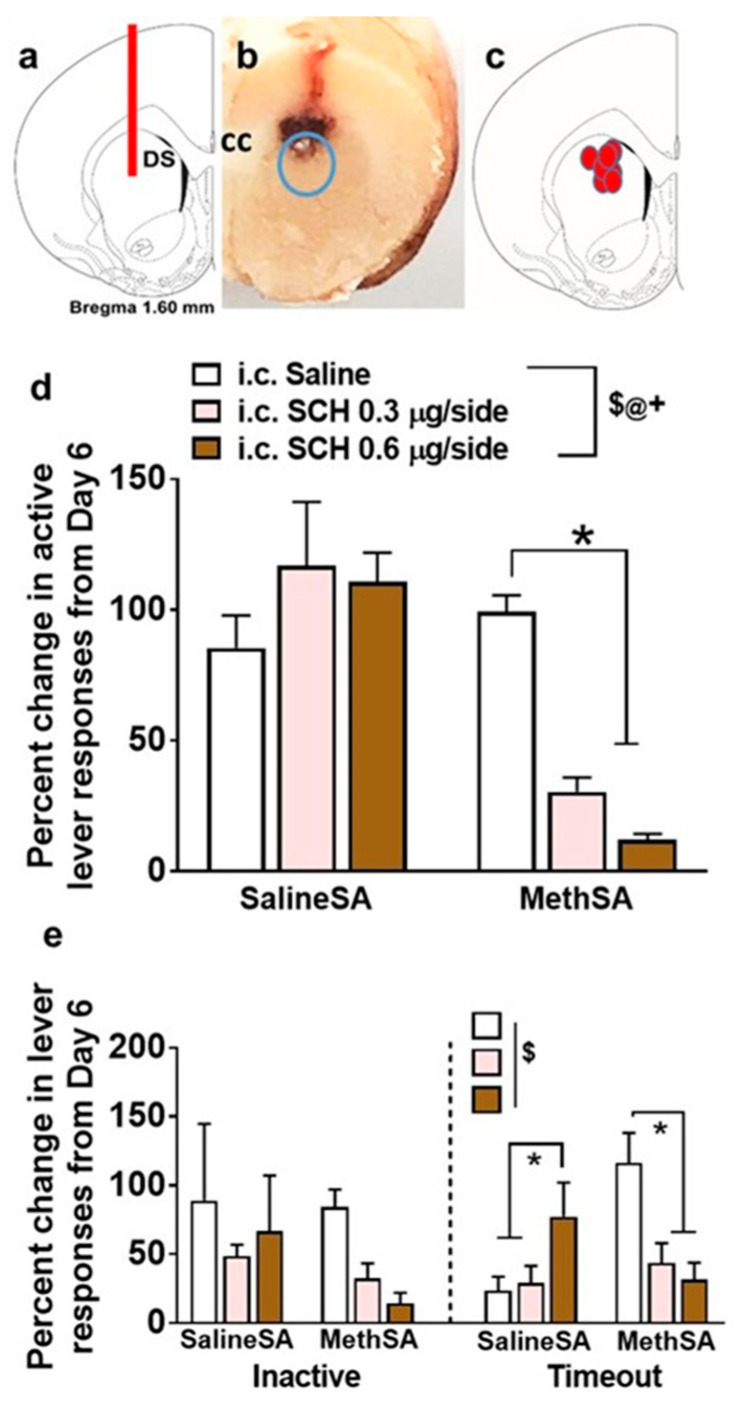Figure 3.
SCH23390 reduces methamphetamine self-administration. (a) Schematic of a coronal slice representing the area of the dorsomedial striatum with cannula placement for i.c. injections. (b) Photomicrograph of the rat brain indicating the area of cannula placement after removal of the i.c. cannula. The infusion site of SCH23390 is indicated in a blue circle. (c) Schematic of a coronal slice indicating the placements of cannula tip from each rat. (d) Change in active lever responses in saline and methamphetamine rats after infusion of vehicle (saline) or doses of SCH23390 expressed as a percentage change from session 6 of self-administration. (e) Change in inactive and timeout lever responses in saline and methamphetamine rats after infusion of vehicle (saline) or doses of SCH23390 expressed as a percentage change from session 6 of self-administration. Intracranial infusions were conducted as a within-subject design with saline infusions conducted first, followed by a 0.3 µg dose of SCH23390 and a 0.6 µg dose of SCH23390 infusions. n = 4 saline and n = 7 methamphetamine rats. Data are expressed as mean ± SEM. $ p < 0.05, significant group × treatment interaction; @ p < 0.05, significant main effect of methamphetamine; + p < 0.05, significant main effect of SCH23390 by repeated-measures ANOVA; * p < 0.05 vs. vehicle (saline) responses by post hoc analysis.

